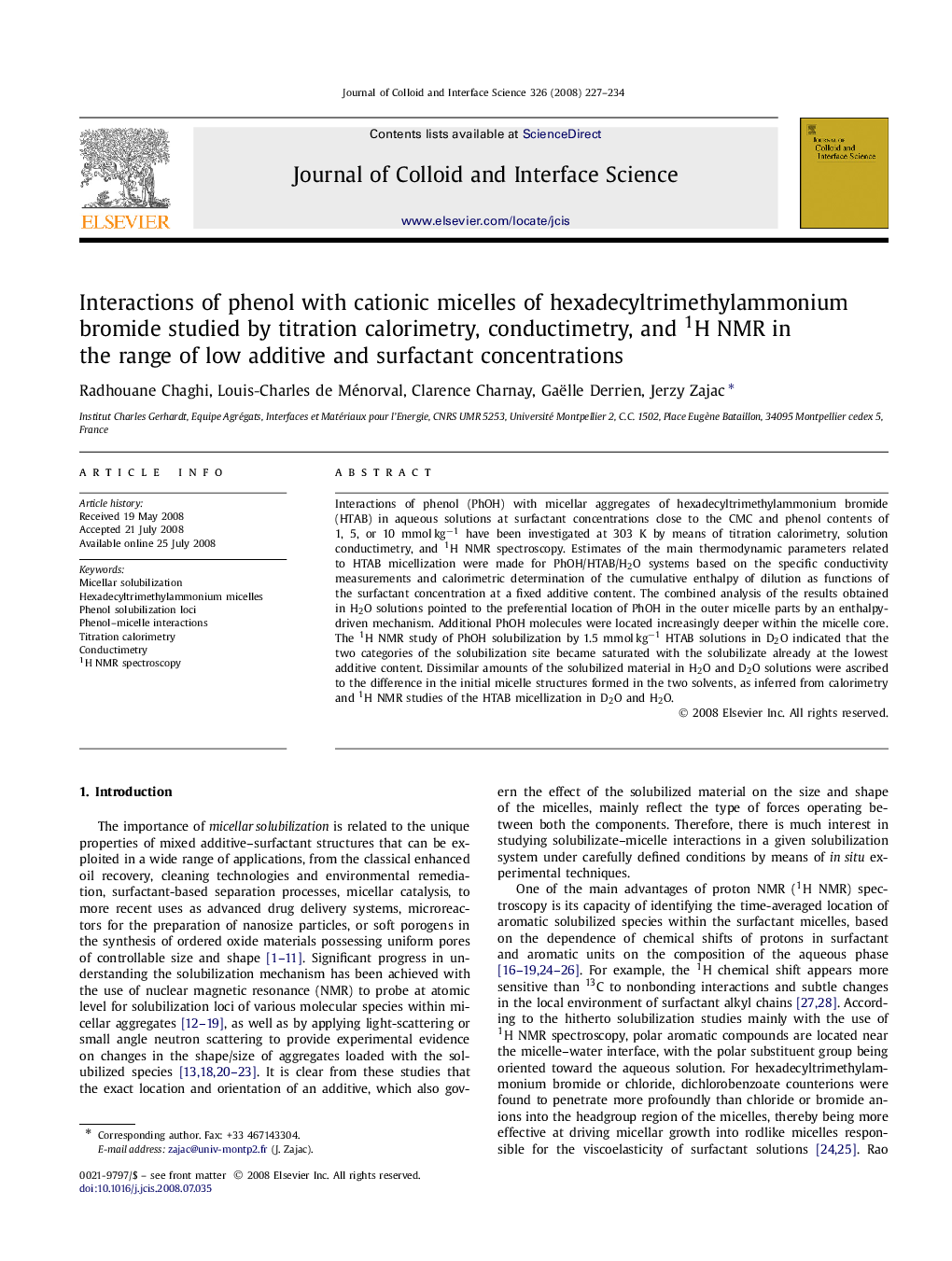| کد مقاله | کد نشریه | سال انتشار | مقاله انگلیسی | نسخه تمام متن |
|---|---|---|---|---|
| 610895 | 880661 | 2008 | 8 صفحه PDF | دانلود رایگان |

Interactions of phenol (PhOH) with micellar aggregates of hexadecyltrimethylammonium bromide (HTAB) in aqueous solutions at surfactant concentrations close to the CMC and phenol contents of 1, 5, or 10 mmol kg−1 have been investigated at 303 K by means of titration calorimetry, solution conductimetry, and 1H NMR spectroscopy. Estimates of the main thermodynamic parameters related to HTAB micellization were made for PhOH/HTAB/H2O systems based on the specific conductivity measurements and calorimetric determination of the cumulative enthalpy of dilution as functions of the surfactant concentration at a fixed additive content. The combined analysis of the results obtained in H2O solutions pointed to the preferential location of PhOH in the outer micelle parts by an enthalpy-driven mechanism. Additional PhOH molecules were located increasingly deeper within the micelle core. The 1H NMR study of PhOH solubilization by 1.5 mmol kg−1 HTAB solutions in D2O indicated that the two categories of the solubilization site became saturated with the solubilizate already at the lowest additive content. Dissimilar amounts of the solubilized material in H2O and D2O solutions were ascribed to the difference in the initial micelle structures formed in the two solvents, as inferred from calorimetry and 1H NMR studies of the HTAB micellization in D2O and H2O.
Phenol is located preferentially in the outer portions of cationic micelles by an enthalpy-driven solubilization mechanism, but some additional molecules are forced to penetrate deeper into the micellar structures.Figure optionsDownload as PowerPoint slide
Journal: Journal of Colloid and Interface Science - Volume 326, Issue 1, 1 October 2008, Pages 227–234